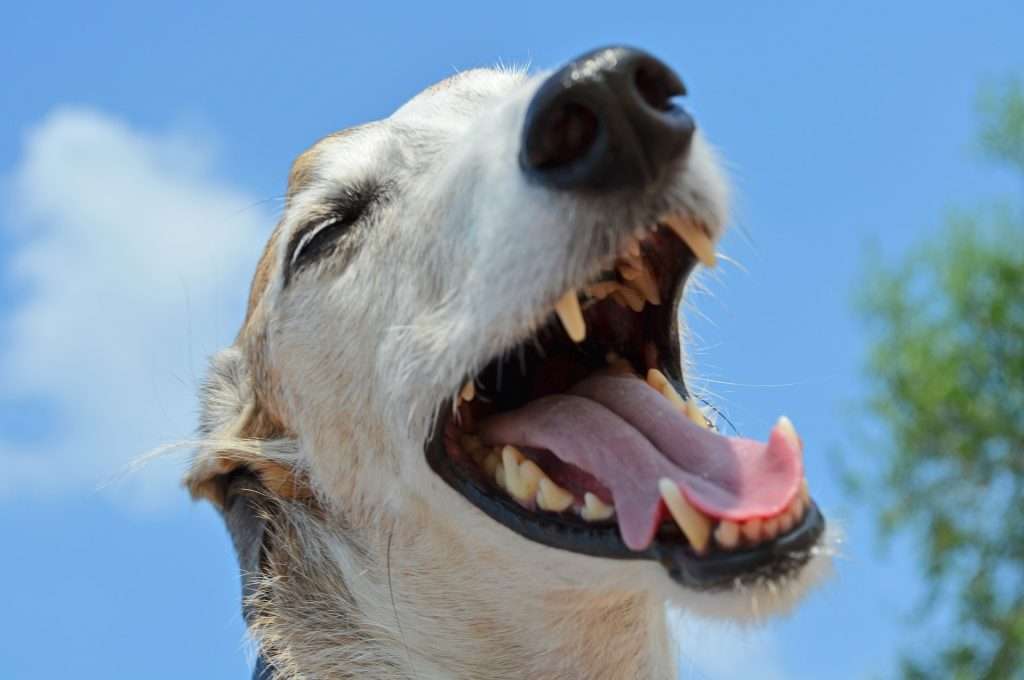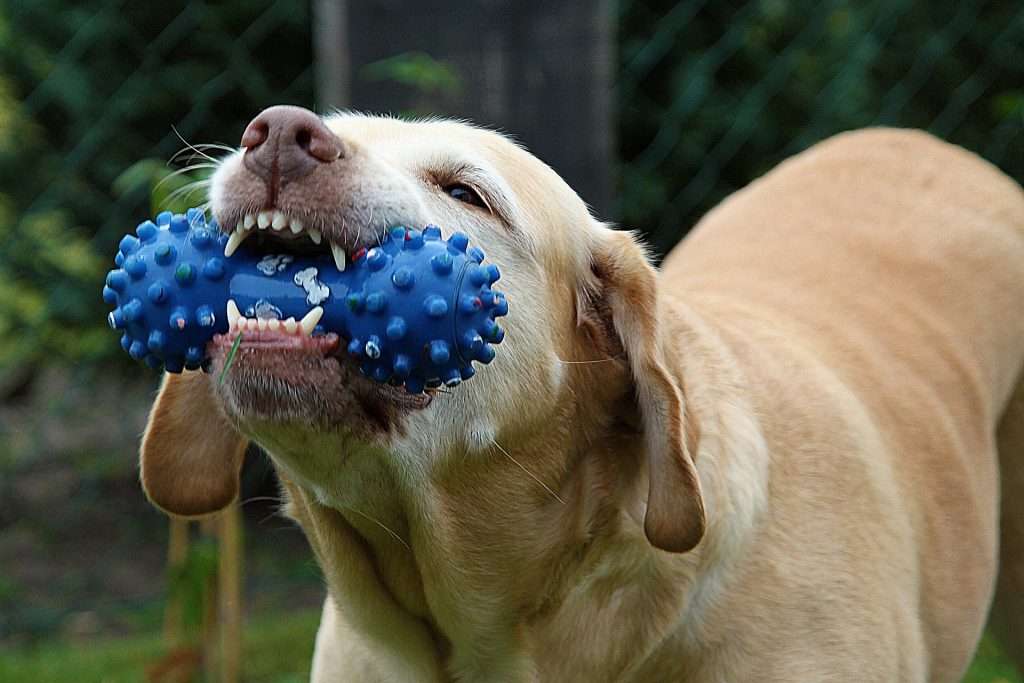Believe it or not, your dog’s teeth are very similar to yours, with the only real difference being the fang-like shape!
A dog is unlikely to have cavities, but they can still develop tartar, plaque buildup and gingivitis.
Severe dental disease can result in teeth requiring extraction or permanent damage to the underlying bone.

Many types of products claim to help keep your dog’s teeth clean. These include special dry dog food, chew toys and even additives that you put into their water bowls.
However, tooth brushing is more often than not the best way to keep your dog’s teeth clean.
Just like a set of human teeth, if left unbrushed, your dog’s teeth will start to form a biofilm called plaque.
This is a sticky, colourless film of sugars and bacteria which collects and mineralises to form tartar in 24-48 hours. The solidified plaque cannot be brushed off and removed by an expert.
According to several vets and dentists, daily dog teeth cleaning is the most effective way to prevent plaque buildup.
It is recommended that an owner starts to brush their dog’s teeth when it is still a puppy so that it accepts it and gets used to it at an early age.
However, incorporating teeth cleaning into your dog’s daily routine at any age will help to keep your dog’s teeth healthy.
So how do you safely and effectively clean a dog’s teeth?
Finding the right time: Establishing a routine and approaching your dog when they are calm is key to having successful dog teeth cleaning sessions.
Pick a time and place when your dog is calm and relaxed.

Placement: If you have a larger-sized dog, it may be better to sit in a chair and place yourself into a position so that you can get access to its mouth.
If your dog is small, try holding it in your lap with its head facing away from you.
First step: The first step in brushing a dog’s teeth should be to use your finger or a cloth on the front of their teeth in a back and forth motion.
Your finger or material should be touching the foundation of the teeth, where the gum meets the tooth. By doing this, you are getting them accustomed to the feeling of brushing and making them comfortable with it.
Second step: Once your pet has become accustomed to the feeling of you brushing their teeth, then you can introduce toothpaste into the dog teeth cleaning process.
There are many types of specialised dog toothpaste, and these even come in meaty flavours, which your dog will love! Firstly try popping a little bit of the toothpaste onto your dog’s food or a little onto one of its teeth with your finger. You should stop immediately if your dog looks uncomfortable.
Resume the next day again, and eventually, your dog will get used to the taste and feel of it in its mouth. If you use a pet toothpaste that they love, your dog may even look forward to the process. Avoid using human toothpaste as it usually contains ingredients (xylitol and alcohol) that are toxic for dogs.
Third step: Now that your dog is familiar with the feeling of brushing and the taste of toothpaste, it is time to shift to using a toothbrush.
What to use for brushing dogs teeth
There are many dog toothbrushes available on the market.
Take care to choose one suited to your dog’s size, as all breeds are different! A dog toothbrush that goes over your finger does the job very well, and a child-sized toothbrush is also acceptable.

There is no need to open your dog’s mouth wide, and just lifting the upper or lower lip will let you have access to the teeth.
It would be best always to brush using a circular motion and concentrate on the gum line. It is essential that you brush slowly and gently as being too rough will be painful for your dog and could cause damage to the gum.
Other things to remember when cleaning your dog’s teeth:
The following are some tips and further information to keep in mind during teeth cleaning:
- A dog’s mouth is full of bacteria, so if you are unable to wear gloves, you must ensure that you wash your hands before and after your dog’s teeth cleaning.
- Remember to clean the toothbrush after use to remove any buildup of plaque, debris and bacteria.
- Never use the same toothbrush for multiple dogs.
- Praise and reward your dog regularly.
Danger signs to look for when cleaning your dog’s teeth:
- A deposit build up on your dog’s teeth.
- Gums that are damaged and bleeding.
- A foul smell which could be an indication of infection.
- A thin red line along the gum indicates inflammation of the gums.
- A sensitive root of the tooth may have become exposed. This will be painful for your dog and could be due to receding gums.
- Discoloured teeth that die and fall out.
- Fractured teeth.
- Your dog refuses food, has difficulty eating or has flecks of blood in their bowls.
- Whimpering when chewing or pawing at the mouth.
If your dog shows any of these symptoms, you should contact your vet immediately. Your dog may require sedation, general anaesthesia, and X-rays to determine how bad the problem is.
Summary – Do you need to brush your dog’s teeth?
Dental disease is widespread in dogs, second only to ear infections, and can be extremely uncomfortable and painful for your dog.
Brushing your dog’s teeth can easily fit into your regular grooming schedule and usually only takes a few minutes.
Remember to reward and praise your dog, and they may even look forward to it!
At Dog Food Info, we always recommend seeing or speaking to your vet if you are worried about brushing your dog’s teeth or you feel there are any issues with your pet.






